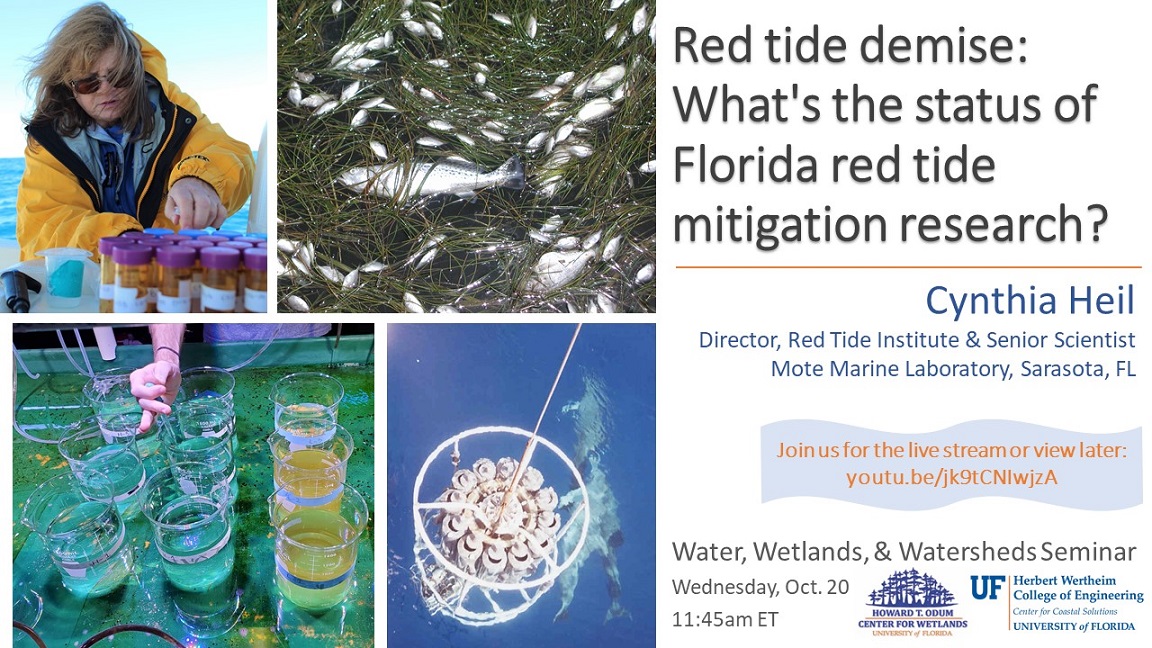October 20, 2021

Red tide demise: What’s the status of Florida red tide mitigation research?
Cynthia Heil, Director, Red Tide Institute & Senior Scientist, Mote Marine Laboratory, Sarasota, FL
Join us for the live stream Oct 20, 11:45am EST: youtu.be/jk9tCNIwjzA.
(Please visit our youtube channel main page for the stream if there are any issues with the direct link.)
ABSTRACT
Florida Red Tide have plagued Florida’s Gulf coast since the first European settlers landed. Comprised of the toxic dinoflagellate Karenia brevis, these blooms occur annually and result in severe economic, environmental and human health impacts. Efforts to mitigate these blooms are not new, and date back to the severe 1947 Red Tide in which K. brevis was recognized as the cause of fish kills and first described taxonomically. The severe and long lasting 2018 Red Tide resulted in a resurgence of state, academic and public interest in potential new and novel control and mitigation techniques. This seminar will discuss the history of Red Tide mitigation research in Florida, including the current state funded Red Tide Mitigation and New Technology Initiative, and present some of the most promising new technologies being developed to prevent, control and mitigation Red Tide.
Bio
Cynthia Heil is a Senior Scientist at Mote Marine Laboratory and the Director of Mote’s Red Tide Institute. The Institute is currently focused on developing and testing new technologies and compounds for the mitigation of Florida Red Tide and its impacts. Her current state and federally funded research program focuses on the ecology and management of Harmful Algal Blooms, particularly Florida Red Tide as well as the impacts of coastal water quality and climate change on harmful algae.
Cynthia first developed an interest in marine science and red tides growing up on an island off the Maine coast. She received her BS in cell biology from Purdue University, an MS from the University of South Florida’s College of Marine Science and a PhD from the University of Rhode Island Graduate School of Oceanography. During post-doctorate appointments (University of Queensland, Australia and University of South Florida) she worked on the development of new methods using marine plants to assess water quality and determined the biological, chemical and physical factors responsible for Florida’s annual red tides. Prior to coming to Mote in 2019, she was a senior scientist at Bigelow Laboratory for Ocean Sciences in West Boothbay Harbor Maine and from 2003-2010 she led the Red Tide Group at the Fish and Wildlife Research Institute, Florida Fish & Wildlife Conservation Commission in St. Petersburg, Florida where she managed a staff of 25 people responsible for monitoring red tide in Florida. She has had experience with the science and management of marine and freshwater HAB species and water quality both within the U.S. and internationally and has over 85 peer reviewed publications.
POSTCARD
